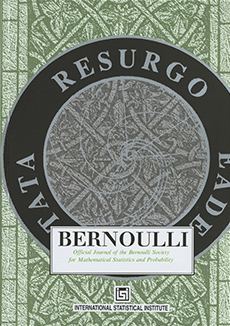Abstract
In Bayesian nonparametric inference, random discrete probability measures are commonly used as priors within hierarchical mixture models for density estimation and for inference on the clustering of the data. Recently, it has been shown that they can also be exploited in species sampling problems: indeed they are natural tools for modeling the random proportions of species within a population thus allowing for inference on various quantities of statistical interest. For applications that involve large samples, the exact evaluation of the corresponding estimators becomes impracticable and, therefore, asymptotic approximations are sought. In the present paper, we study the limiting behaviour of the number of new species to be observed from further sampling, conditional on observed data, assuming the observations are exchangeable and directed by a normalized generalized gamma process prior. Such an asymptotic study highlights a connection between the normalized generalized gamma process and the two-parameter Poisson–Dirichlet process that was previously known only in the unconditional case.
Citation
Stefano Favaro. Antonio Lijoi. Igor Prünster. "Asymptotics for a Bayesian nonparametric estimator of species variety." Bernoulli 18 (4) 1267 - 1283, November 2012. https://doi.org/10.3150/11-BEJ371
Information





